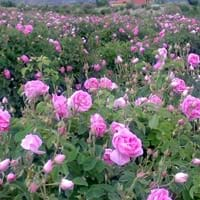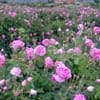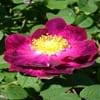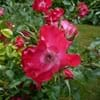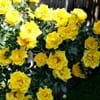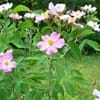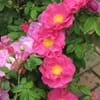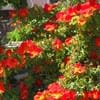What is
Life Span
Perennial
Perennial
Type
Flowering Plants, Ornamental Plants, Perennial
Bulb, Flowering Plants
Origin
Hybrid origin
Aegean Islands, Central Asia, Middle East, North Africa, Southern Europe, Western China
Types
Summer Damasks, Autumn Damasks
Crocus abantensis, Crocus adanensis, Crocus biflorus, Crocus chrysanthus, Crocus korolkowii
Number of Varieties
2
99+
90
99+
Habitat
gardens
Scrubs, Woods
USDA Hardiness Zone
Not Available
3-8
AHS Heat Zone
Not Available
8-1
Sunset Zone
Not Available
1a, 1b, 2a, 2b, 3a, 3b, 4, 5, 6, 7, 8, 9, 10, 11, 12, 13, 14, 15, 16, 17, 18, 19, 20, 21, 22, 23, 24
Habit
Clump-Forming
Clump-Forming
Information
Plant Size
Minimum Height
200.00 cm
99+
Not Available
Minimum Width
200.00 cm
99+
5.10 cm
99+
Plant Color
Flower Color
Pink
Blue, Orange, Pink, Purple, White, Yellow
Flower Color Modifier
Bicolor
Not Available
Fruit Color
Non Fruiting Plant
Not Available
Leaf Color in Spring
Green, Gray Green
Green
Leaf Color in Summer
Dark Green, Green
Not Available
Leaf Color in Fall
Green, Gray Green
Green
Leaf Color in Winter
Dark Green, Green
Green
Shape
Leaf Shape
Pinnate
Grass like
Thorns
Yes
No
Season
Plant Season
Spring, Summer, Fall
Spring, Winter
Growing Conditions
Sunlight
Full Sun, Partial Sun
Full Sun, Part sun
Growth Rate
Medium
Medium
Type of Soil
Loam, Sand
Loamy
The pH of Soil
Acidic, Neutral
Neutral, Slightly Acidic
Soil Drainage
Well drained
Well drained
Bloom Time
Spring, Late Spring, Early Summer, Summer, Late Summer, Early Fall, Fall
Spring, Winter
Repeat Bloomer
Not Available
No
Tolerances
Drought
Drought
Care
Where to Plant?
Container, Ground, Pot
Container, Ground, Pot
How to Plant?
Cuttings
From bulbs, Grafting, Seedlings
Plant Maintenance
Medium
Medium
Watering Plants
Watering Requirements
Average Water Needs
Form a Soil ring to water efficiently, Water Deeply, Water twice a day in the initial period, Water when soil is dry
In Summer
Lots of watering
Lots of watering
In Spring
Moderate
Moderate
In Winter
Average Water
Average Water
Soil
Soil pH
Acidic, Neutral
Neutral, Slightly Acidic
Soil Type
Loam, Sand
Loamy
Soil Drainage Capacity
Well drained
Well drained
Sun Exposure
Full Sun, Partial Sun
Full Sun, Part sun
Pruning
Remove damaged leaves, Remove dead branches, Remove dead leaves
No pruning needed in the early stages, Prune to stimulate growth, Remove dead or diseased plant parts, Requires little pruning
Fertilizers
All-Purpose Liquid Fertilizer
All-Purpose Liquid Fertilizer
Pests and Diseases
Beetles, Black Spot, Caterpillars, Downy mildew, Mosaic viruses, Powdery mildew, Rust, Scale insects, Thripes
Aphids, Botrytis Blight, Mushroom root rot, Narcissus Basal Rot, Narcissus Bulb Fly, Slugs, Snails, Tulip Fire, Tulip Viruses
Plant Tolerance
Drought
Drought
Facts
Flowers
Showy
Yes
Flower Petal Number
Double
Single
Fruits
Showy Fruit
No
No
Edible Fruit
Not Available
No
Fragrance
Fragrant Flower
Yes
Yes
Fragrant Fruit
No
No
Fragrant Leaf
No
No
Fragrant Bark/Stem
No
No
Showy Foliage
No
No
Showy Bark
No
No
Foliage Texture
Medium
Fine
Foliage Sheen
Glossy
Glossy
Evergreen
No
No
Invasive
Not Available
No
Self-Sowing
Not Available
Yes
Attracts
Birds, Butterflies
Not Available
Allergy
Rash
Not Available
Benefits
Uses
Aesthetic Uses
Showy Purposes
Not Used For Aesthetic Purpose
Beauty Benefits
Not Available
Not Available
Edible Uses
No
No
Environmental Uses
Air purification
Air purification
Plant Benefits
Medicinal Uses
Not Available
Arthritis, Gout
Part of Plant Used
Flowers
Whole plant
Other Uses
Oil is used in perfume, soaps, creams, etc.
Not Available
Used As Indoor Plant
Yes
No
Used As Outdoor Plant
Yes
Yes
Garden Design
Container, Cutflower, Feature Plant, Foundation, Mixed Border, Topiary / Bonsai / Espalier
Not Available
Scientific Name
Botanical Name
Rosa × damascena
Crocus Longiflorus
Common Name
Damask rose, rose of castile
Crocus
In Hindi
जामदानी गुलाब
Crocus
In German
Damaszener-Rosen
Krokus
In French
Le rosier de Damas
Crocus
In Spanish
Rosa de Damasco, Rosa de Castilla
Azafrán
In Greek
δαμασκηνό τριαντάφυλλο
κρόκος
In Portuguese
rosa damascena
Açafrão
In Polish
Róża damasceńska
Krokus
In Latin
surrexit Damascum
Erocum
Classification
Kingdom
Plantae
Plantae
Phylum
Magnoliophyta
Magnoliophyta
Class
Magnoliopsida
Liliopsida
Order
Rosales
Asparagales
Family
Rosaceae
Iridaceae
Genus
Rosa
Crocus
Clade
Not Available
Angiosperms, Monocots
Tribe
Not Available
Not Available
Subfamily
Not Available
Crocoideae
Number of Species
Not Available
90
99+
|
||
|
||
|
